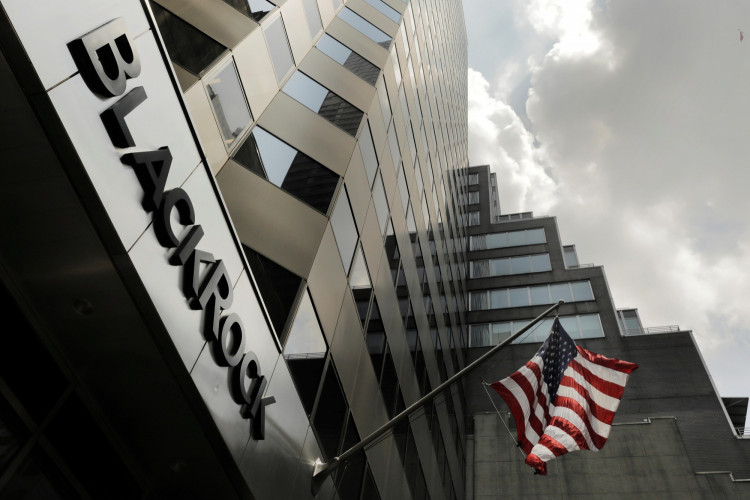Before the U.S. stock market opened on Friday, July 14, BlackRock, the world's largest asset management company, announced its second-quarter earnings.
According to the financial report, BlackRock's Q2 revenue fell 1% to $4.46 billion, slightly exceeding market expectations of $4.45 billion. Its adjusted net profit grew 25% year-on-year to $1.4 billion, translating to an earnings per share of $9.28, which surpassed market expectations of $8.45. Recent cost-cutting measures at BlackRock helped its adjusted operating profit margin rebound to 42%, almost the same level as the second quarter of 2022.
Thanks to investors pouring substantial funds into ETFs and cash management products, BlackRock's assets under management (AUM) for the second quarter bounced back to $9.43 trillion, exceeding the market forecast of $9.36 trillion.
The company's net inflow of funds in the second quarter was $80.16 billion, less than the market estimate of $81 billion, and also below the $89.6 billion from the same period last year and the $110 billion from the first quarter of this year. Long-term investment products, including retail investment products, mutual funds, and ETFs, had a net inflow of $57 billion. Breaking it down, retail investment products saw a net inflow of $3.79 billion; ETFs, $48 billion; and institutional funds, $4.91 billion. Apart from long-term investment products, net inflows for cash management amounted to $23.47 billion.
Classifying by product type, in the second quarter, investors withdrew $4.32 billion from equity funds, while the market expected a net inflow of $21 billion; fixed income products saw a net inflow of $43.82 billion; mixed-asset products had a net inflow of $17.37 billion; and investors withdrew $180 million from alternative investment products.
Larry Fink, BlackRock's CEO, stated that their service strategy, driven by robust performance, is attracting customers to entrust more portfolios to BlackRock. Clients and others will benefit from their "differentiated asset management approach."
As the world's largest fund management company, BlackRock is seeking to position itself as a one-stop service provider, offering stocks, bonds, and money market funds, private asset strategies, and providing clients with technology, data, analytics, and financial market consulting services.
So far this year, BlackRock's share price has increased by 4.4%, trailing behind the S&P 500 index's 17% growth. On Friday, the company's shares opened higher but then slipped, with losses exceeding 1% by midday.
Regarding future company performance, BlackRock predicts a surge in investment in its bond funds once the Federal Reserve stops raising interest rates. This prediction comes as the fund management company's earnings exceeded expectations and the assets it managed by the end of the second quarter rebounded to $9.43 trillion.
In the past few months, as the Federal Reserve's rate hikes have increased the yield on money market funds, investors have flocked to these funds, causing their size to exceed $5 trillion. But BlackRock suggests that once investors are convinced that the yield on fixed income funds will no longer be affected by the Federal Reserve, most funds will be prepared to switch from money market funds to fixed income funds.
Rob Kapito, BlackRock's president, indicated that the fixed income market will eventually bring returns to investors. He predicted that the demand for fixed income funds will recover, with trillions of dollars flowing into the fixed income market. When investors believe that interest rates have peaked, these funds will flood into the fixed income market, and they need to be prepared to seize the opportunity.
Global bond ETFs broke through $2 trillion in assets this week, doubling from three years ago, and BlackRock predicts that assets will reach $6 trillion by 2030.
Regarding BlackRock's Q2 report, Goldman Sachs believes that BlackRock's portfolio continues to lean towards lower-fee strategies, which continues to pressure its fee growth.
Citigroup believes that BlackRock's Q2 profits exceeded expectations, but fund inflows were less than expected, resulting in a "mixed bag of quarterly performance."






